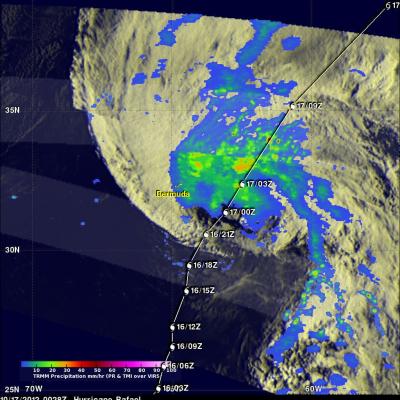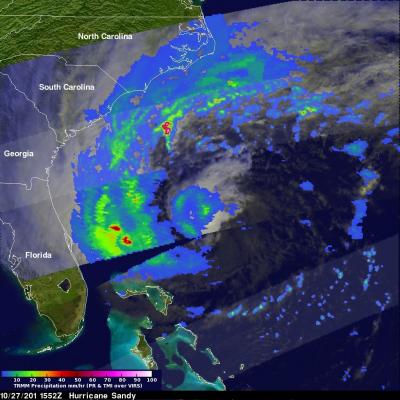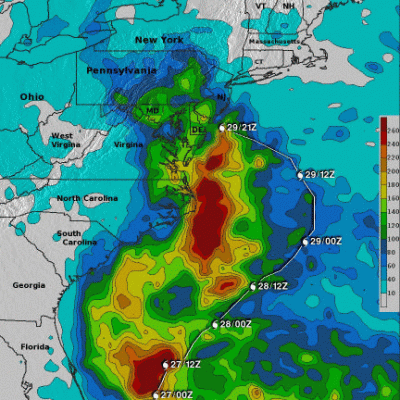Hurricane Rafael Shown Passing Near Bermuda
Hurricane Rafael has started to pick up speed after it passed to the east of Bermuda. This image shows a TRMM rainfall analysis that used data collected from two recent passes above Hurricane Rafael. The first orbit was on Tuesday October 16, 2012 at 2250 UTC (6:50 PM EDT). The second orbit received data when TRMM passed over on Wednesday October 17, 2012 at 0028 UTC (8:28 PM EDT on October 16, 2012). TRMM's Microwave Imager (TMI) and Precipitation Radar (PR) data show that Rafael was producing rainfall over a large area of the Atlantic. Bermuda was shown getting light to moderate rain showers




